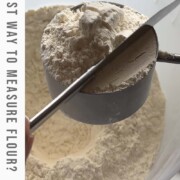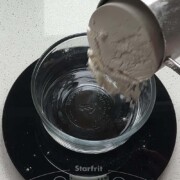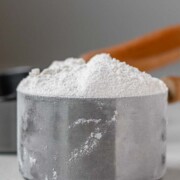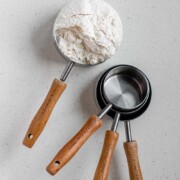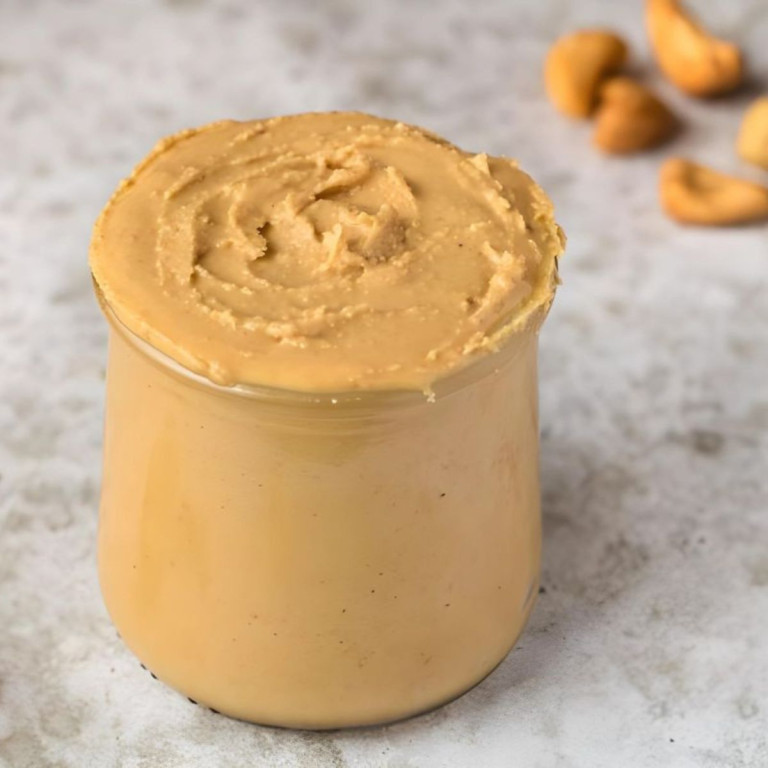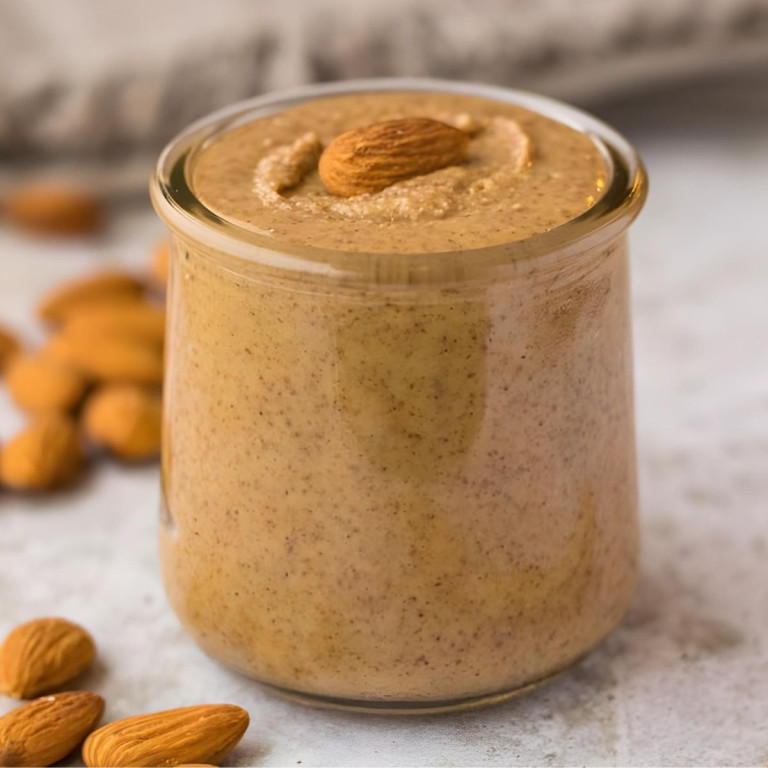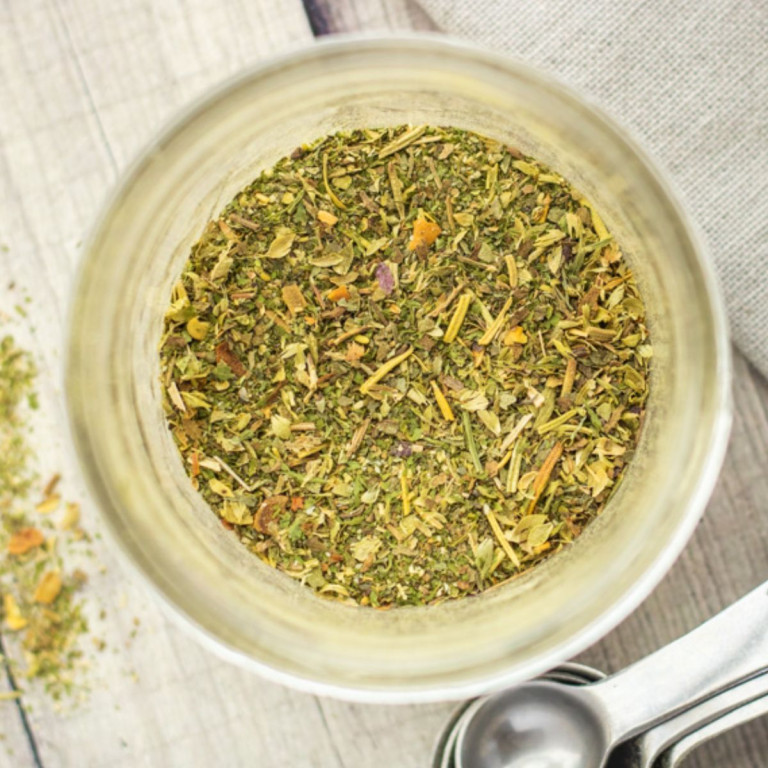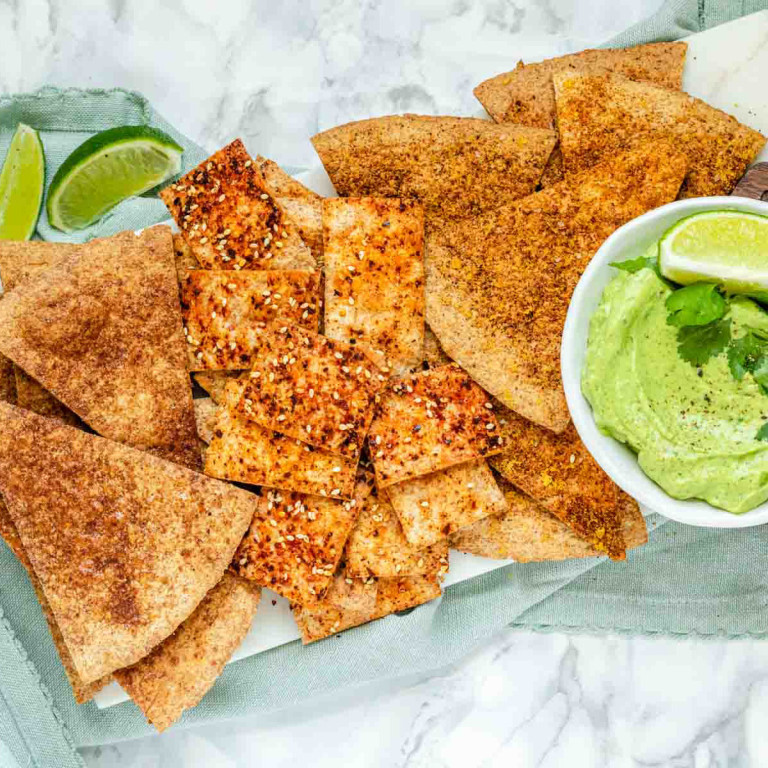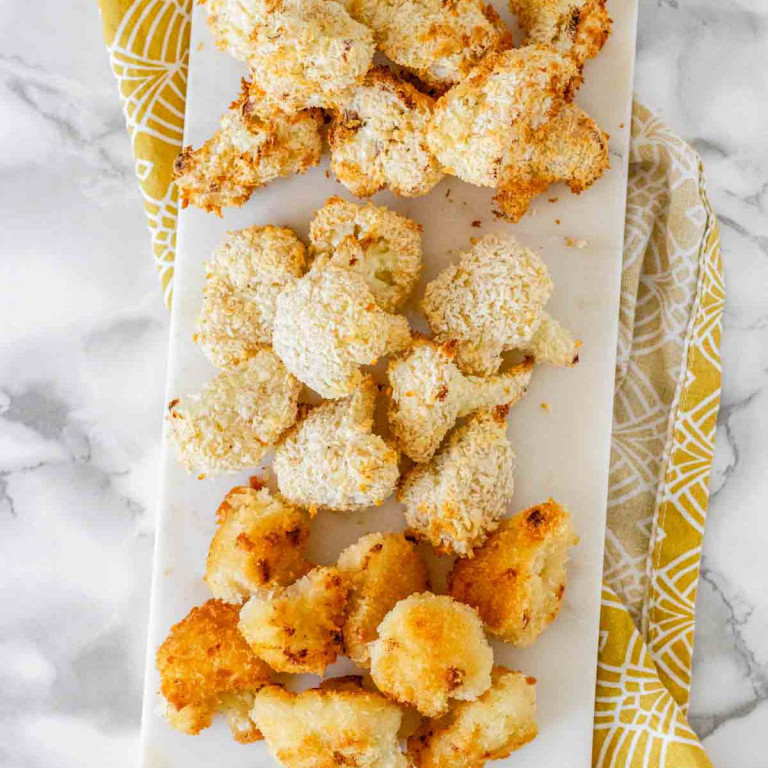Measuring flour wrong is one of the easiest ways to mess up a recipe. If your cookies turn out dry or your muffins are dense, the problem might be too much flour. The way you measure makes a huge difference, up to almost half a cup depending on the method.
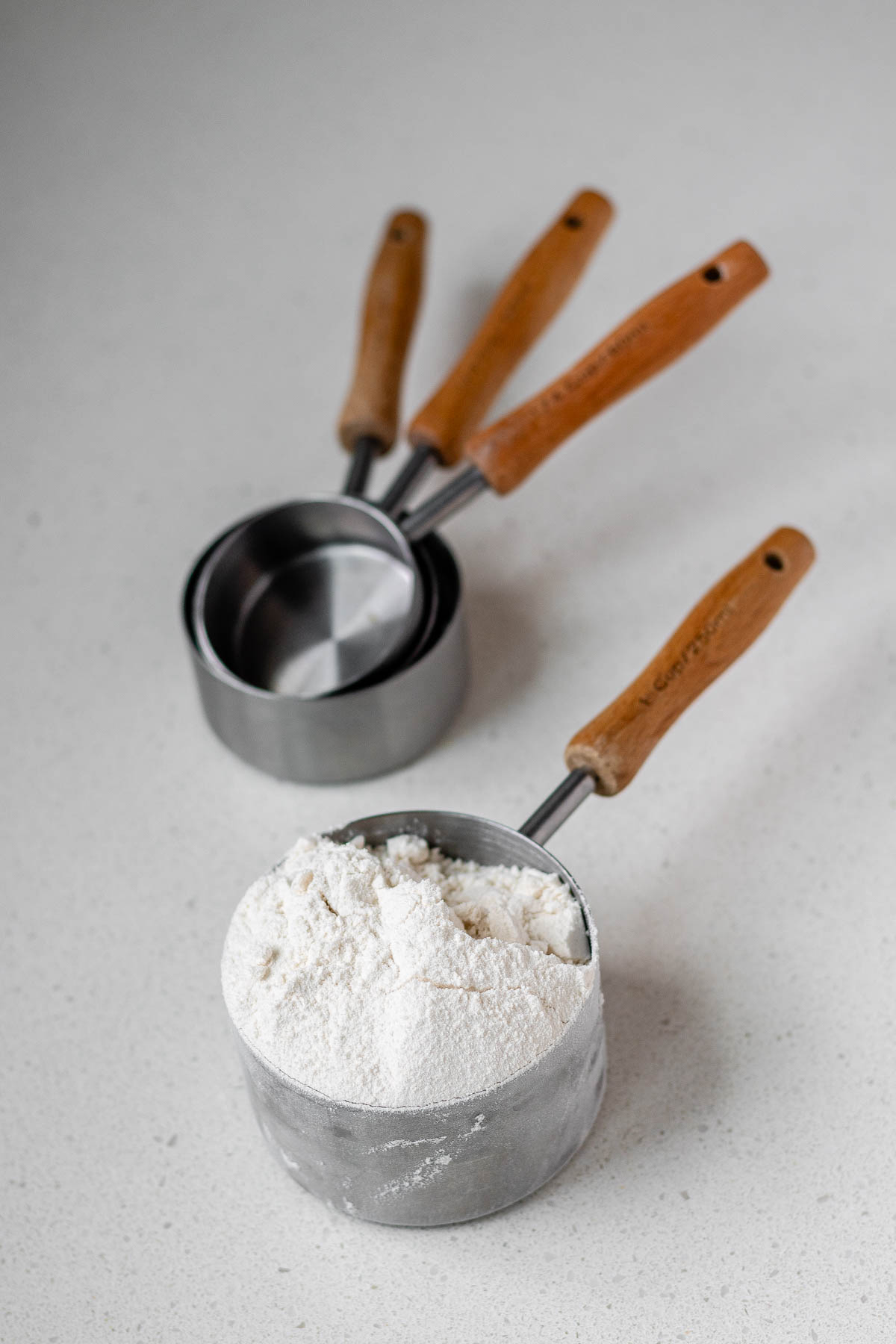
If you’ve ever followed a recipe and wondered why it didn’t turn out like the photo, the answer might be in your measuring cup.
As someone who develops and tests recipes professionally, I always measure my flour by weight. It’s the most accurate, most consistent method. Let me show you why.

Why Measuring Flour Properly Is So Important
Here’s the deal: 1 cup of flour should weigh 120 grams. But depending on how you measure it, the amount can vary a lot.
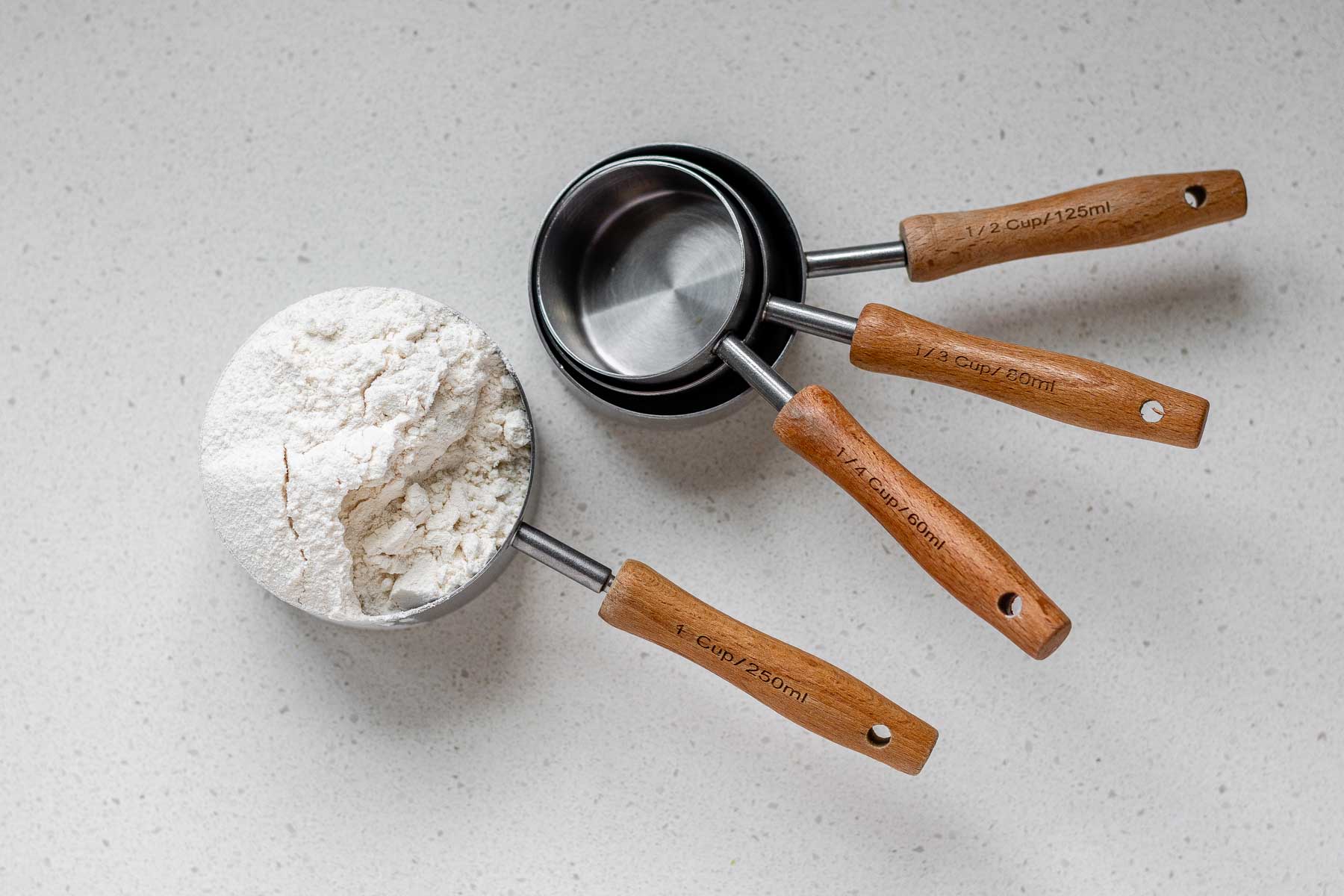
Flour Measurement Comparison: 3 Methods
To test the difference, I measured all-purpose flour using three common methods. Here’s what I got:
| Method | Weight in Grams | Difference from Weight |
|---|---|---|
| Weighing (digital scale) | 120g | — |
| Spoon and level | 138g | +18g (about 1 ½ tbsp too much) |
| Scooping | 166g | +46g (over ⅓ cup too much) |
Let that sink in. Scooping flour right from the bag gives you almost 50% more flour than weighing it. That’s a recipe killer.
That’s a 46-gram difference between weighing and scooping, which is nearly half a cup of extra flour.
That much extra flour will make your cookies dry, your muffins dense, and your dough tough.

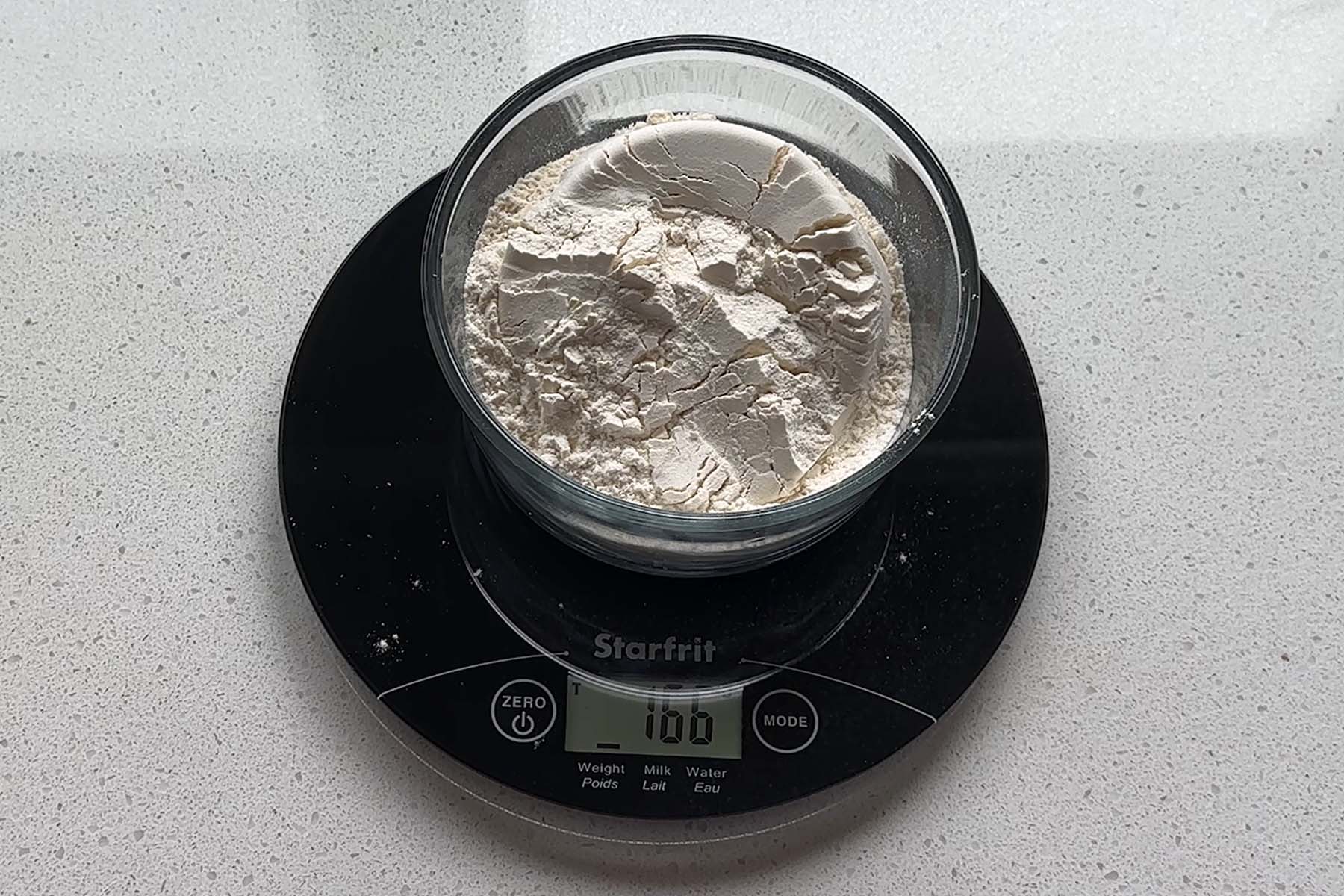
Why Weighing Flour Is the Best Method
Using a digital kitchen scale is the most accurate way to measure flour. It removes all the guesswork. Flour can settle in the bag, be compressed by how you scoop, or change volume depending on humidity. But weight? Weight stays the same.
Weighing also saves dishes, since you can zero the scale between ingredients. One bowl. No mess.
The Best Way to Measure Flour: Use a Kitchen Scale
The most accurate way to measure flour is by weight using a digital kitchen scale.
Here’s how to do it:
- Place your mixing bowl on the scale and zero it out.
- Spoon the flour into the bowl until it hits 120 grams.
- Done. No guessing, no packing, no fluffing.
It’s precise, consistent, and foolproof.
Worried about the cost of a scale or where you’ll store it?

I have a Starfrit kitchen scale that I’ve had for years. When I bought it, it was about $12. This Amazon Basics kitchen scale is listed for about $10. My scale is very thin and light, and I store it in a kitchen drawer with my utensils, where it’s easy to get at!
Why Spoon and Level Isn’t Perfect
If you don’t have a scale, the spoon and level method is better than scooping, but it’s still not totally accurate.
How to spoon and level:
- Fluff up the flour in your container with a spoon.
- Gently spoon the flour into your measuring cup.
- Use the flat edge of a knife to level off the top.
Even when done carefully, this method usually ends up with extra flour. I got around 138 grams per cup for these photos. That’s 18 grams too much. That extra flour might not ruin your bake, but it won’t give you the most consistent results either.
The Worst Way: Scooping Directly from the Bag
This is the method most people start out with, and it’s also the one that causes the most baking fails.
Scooping compacts the flour, especially if your flour is stored in a bag or canister. You can end up with 166 grams of flour in your measuring cup. That’s almost 50% more than what the recipe calls for.
If your baking feels hit-or-miss, this might be why.
If you’re making my brioche buns and they don’t turn out, it might be because you didn’t weigh the flour. This is why I recommend starting with 2 1/2 to 3 cups of flour instead of going ahead with all 4 cups immediately.
The weight of 4 cups of flour is 480 grams. If you scooped the flour and consistently got too much flour in the cup like in my experiment, you could be using 664 grams of flour instead of 480. That’s 184 grams too much, which is over a full cup extra!
Recommended Tools for Accurate Measuring
- Digital kitchen scale – look for one that switches between grams and ounces
- Dry measuring cups – use these only if you’re spooning and leveling
- A small spoon and a flat-edged knife – if you’re not weighing
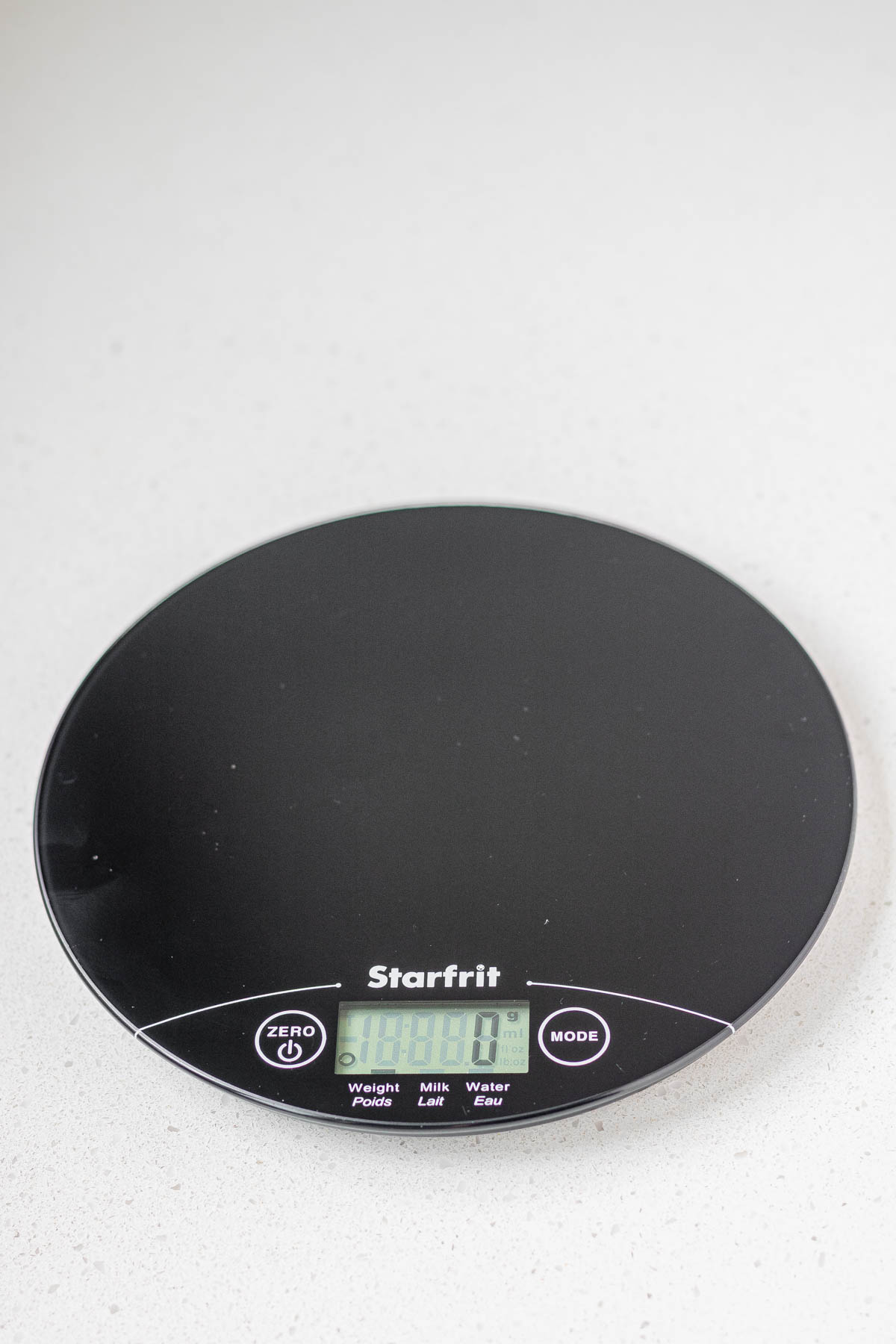
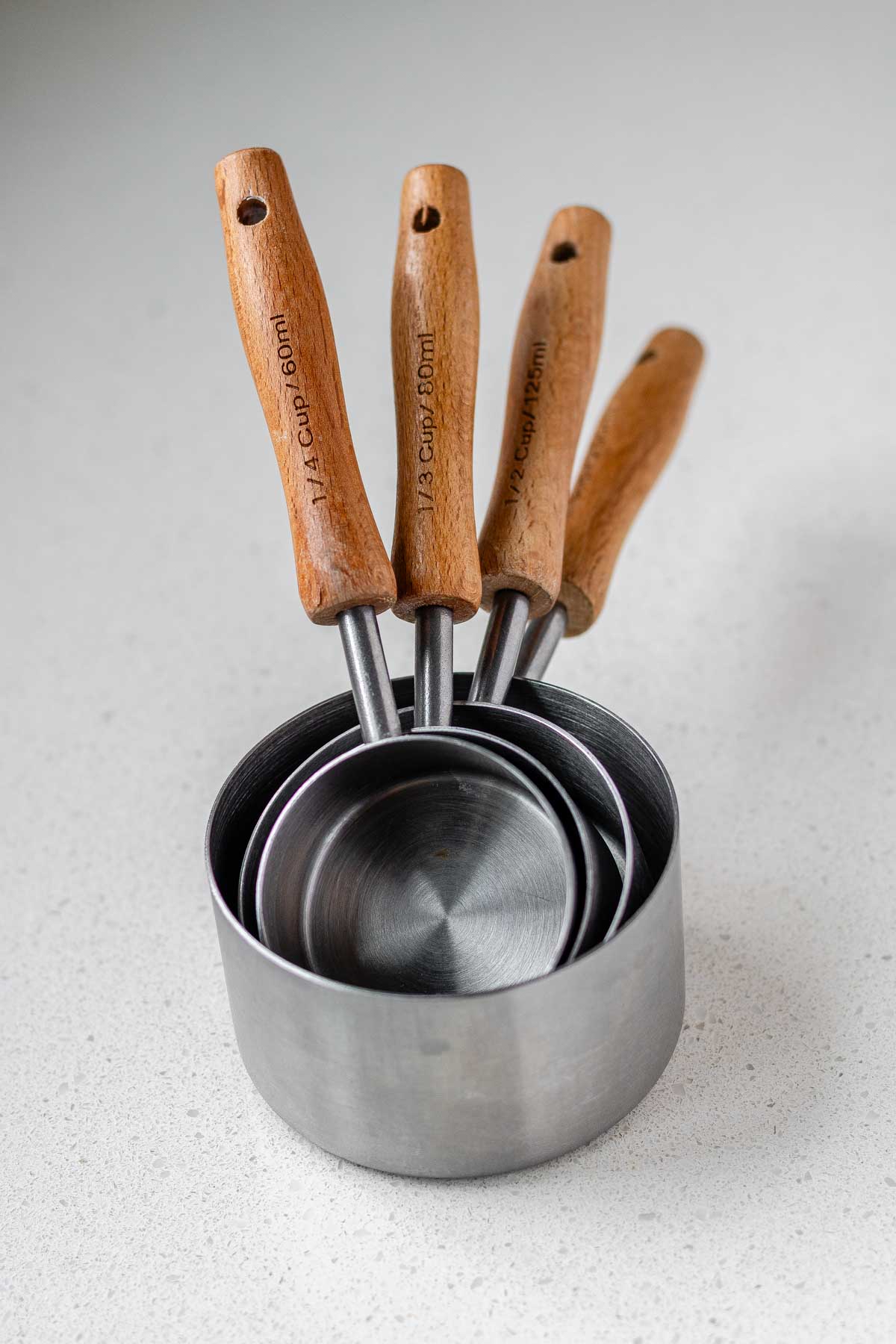
Final Thoughts
Measuring flour properly is the easiest way to improve your baking. I know it sounds basic, but it really makes all the difference.
So if you’re not already using a kitchen scale, I highly recommend getting one. You’ll waste fewer ingredients, your recipes will turn out better, and you’ll build confidence in the kitchen.
120 grams per cup. Always.
FAQs
For all of my recipes on Pipercooks, 1 cup of all-purpose flour = 120 grams. This is the standard weight, usually on bags of flour, including brands like King Arthur Baking Company.
No need. Weigh flour first, then sift if the recipe says to. Sifting changes the volume but not the weight. That’s another reason why weighing is more reliable than using volume.
My Best Recipes With Flour
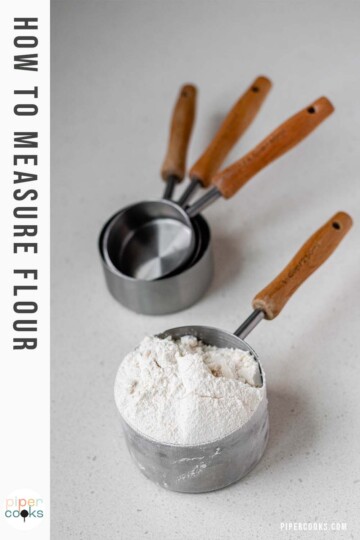
SHARE THIS RECIPE
Rating, commenting, and sharing my recipes really helps. Thanks for taking the time! Mention @pipercooksblog on Instagram.

